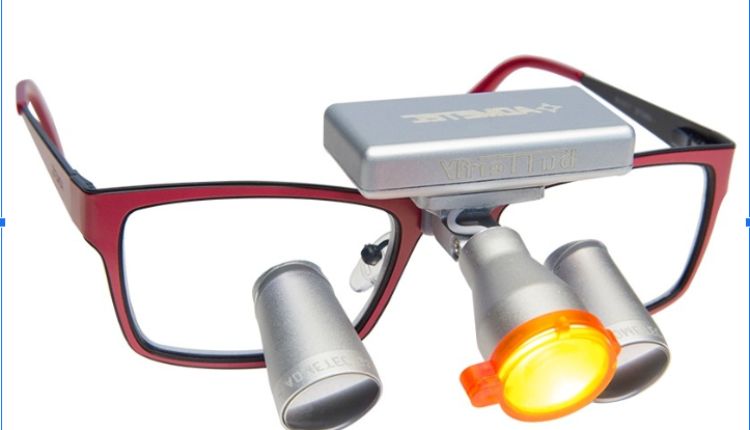Tips for Getting the Best Dental Surgery Lighting
In the precise and detail-oriented world of dentistry, the significance of good lighting cannot be exaggerated. Effective lighting is crucial not only for enhancing the accuracy of dental procedures but also for improving patient comfort and the overall ambiance of the practice. In this article, we will explore the fundamental aspects of dental surgery lighting and provide valuable tips on achieving the best dental surgical led headlight setup for your practice.
Key Insights on Dental Practice Lighting
- Impact on Procedure Accuracy and Patient Comfort: Dental practice lighting significantly affects procedure accuracy, patient comfort, and the overall ambiance of the practice. Proper lighting is essential for detailed tasks such as color matching and cosmetic work.
- Ideal Color Temperature: The ideal color temperature for dental surgeries ranges between 3500 and 6500 Kelvin. This range provides natural light, which is crucial for accurate color representation.
- High Colour Rendering Index (CRI): A high CRI of over 90% is vital for accurate color representation, allowing dentists to see colors as they truly are.
- Balancing Task and Ambient Lighting: Properly balanced task and ambient lighting are essential for procedure precision and comfort. Task lighting focuses on specific areas where detailed work is required, while ambient lighting provides general illumination for the entire room.
- Adjustable Operating Lights: Operating lights with adjustable intensity and color temperature enhance functionality and allow for customization based on specific procedures.
- Natural Light Integration: Incorporating natural light in patient areas can significantly enhance the aesthetic and functional value of the practice.
- Regular Updates: Regularly updating lighting systems ensures optimal operation and keeps the practice up-to-date with technological advancements.
Dual Purpose of Dental Surgical Led Headlight
In dental surgeries, lighting serves a dual purpose: task lighting for procedural precision and ambient lighting for creating a comfortable atmosphere. Task lighting ensures clarity and precision for intricate tasks, while ambient lighting contributes to a serene environment for both practitioners and patients.
Mitigating Eye Strain and Enhancing Energy Levels
Balancing the intensity and quality of task and ambient lighting is crucial not only for procedural precision but also for the comfort and well-being of dental practitioners. Constantly adjusting to varying light sources can lead to eye strain and fatigue, impacting performance and energy levels. A well-designed lighting setup mitigates these issues and enhances overall comfort and efficiency.
Optimal Illumination for Dental Surgeries
Research indicates that the ideal dental surgical led headlight setup in a dental practice involves a combination of general room illumination and focused working area lighting. For general room illumination, a level of around 500 lux is recommended, which can be achieved using strategically positioned fluorescent lamps. Daylight white lamps with good color rendering are ideal, providing a balance with natural daylight and ensuring accurate color representation.
Creating a Soothing Environment for Dental Patients
Thoughtfully designed lighting plays a crucial role in creating a calming, soothing and welcoming atmosphere for patients. Integrating natural light, where possible, enhances patient comfort and provides a pleasant experience. Practices can tailor lighting to create specific aesthetics, such as modern looks with cabinet down-lighting or luxurious ambiances with well-chosen wall lights.
Balancing Ambient Lighting with Task Lighting
Achieving the right balance between ambient and task lighting is essential in dental surgeries. The general guideline suggests a ratio of 1:5, where the intensity of the operating light around the patient’s mouth should be significantly higher than the surrounding room lighting. This balance minimizes shadowing and glare, enhancing both accuracy and comfort during procedures.
Leveraging Natural Window Lighting
Natural light offers numerous benefits, such as enhanced patient comfort, increased productivity, and improved shade matching. However, it’s essential to account for variability in natural light and have a robust artificial lighting system to ensure consistent illumination. Strategic window orientation and the use of blinds can optimize the benefits of natural light while preventing issues like sunlight discoloration cabinetry.
Selecting the Ideal Ceiling Lights for Your Dental Practice
Popular ceiling lights like the Magic Suspended Ceiling Light and the Yale Surface LED Light Fitting provide well-balanced light emission, ensuring a brightly lit environment without causing visual strain. Innovative solutions like Image Feature Lighting can also enhance the patient experience by creating engaging environments, especially for practices with younger clientele.
Enhancing Dental Procedures with Advanced Operating Lights
Operating lights are critical in dental surgeries, providing precise illumination for various procedures. Options like the Ancar S1 with the Polaris LED operating light offer variable intensity and adjustable color temperatures, catering to different procedural needs. Advanced features such as integrated HD cameras can further enhance procedural accuracy and documentation.
Understanding Color Temperature and Colour Rendering
Color temperature and Colour Rendering Index (CRI) are crucial aspects of dental surgical led headlights. The color temperature influences the hue of light, with a range of 3500 – 6500 Kelvin being ideal for dental surgeries. A high CRI, particularly over 90%, ensures accurate color perception, which is essential for tasks like shade matching.
Tailoring Lighting Across Your Dental Practice
Effective lighting extends beyond the surgery room to other areas like the decontamination room, reception, and waiting areas. Tailoring lighting to the specific needs of each area enhances functionality and patient experience. For instance, brighter lighting is necessary for decontamination rooms, while softer, warmer lighting creates a relaxing atmosphere in waiting areas.
Conclusion
Proper lighting in dental practices is a pivotal component that influences efficiency, accuracy, patient comfort, and overall ambiance. From precise operating lights to soothing ambient lighting, each and every element plays a vital role in defining the quality of care and patient experience.
For personalized advice and tailored lighting solutions, consider consulting with experts like Schultz Loupes. Visit Schultz Loupes to explore a range of dental surgical LED headlights and dental loupes designed to elevate your practice’s lighting and overall functionality. Illuminate the path to a brighter and more efficient dental practice with the right lighting choices.




